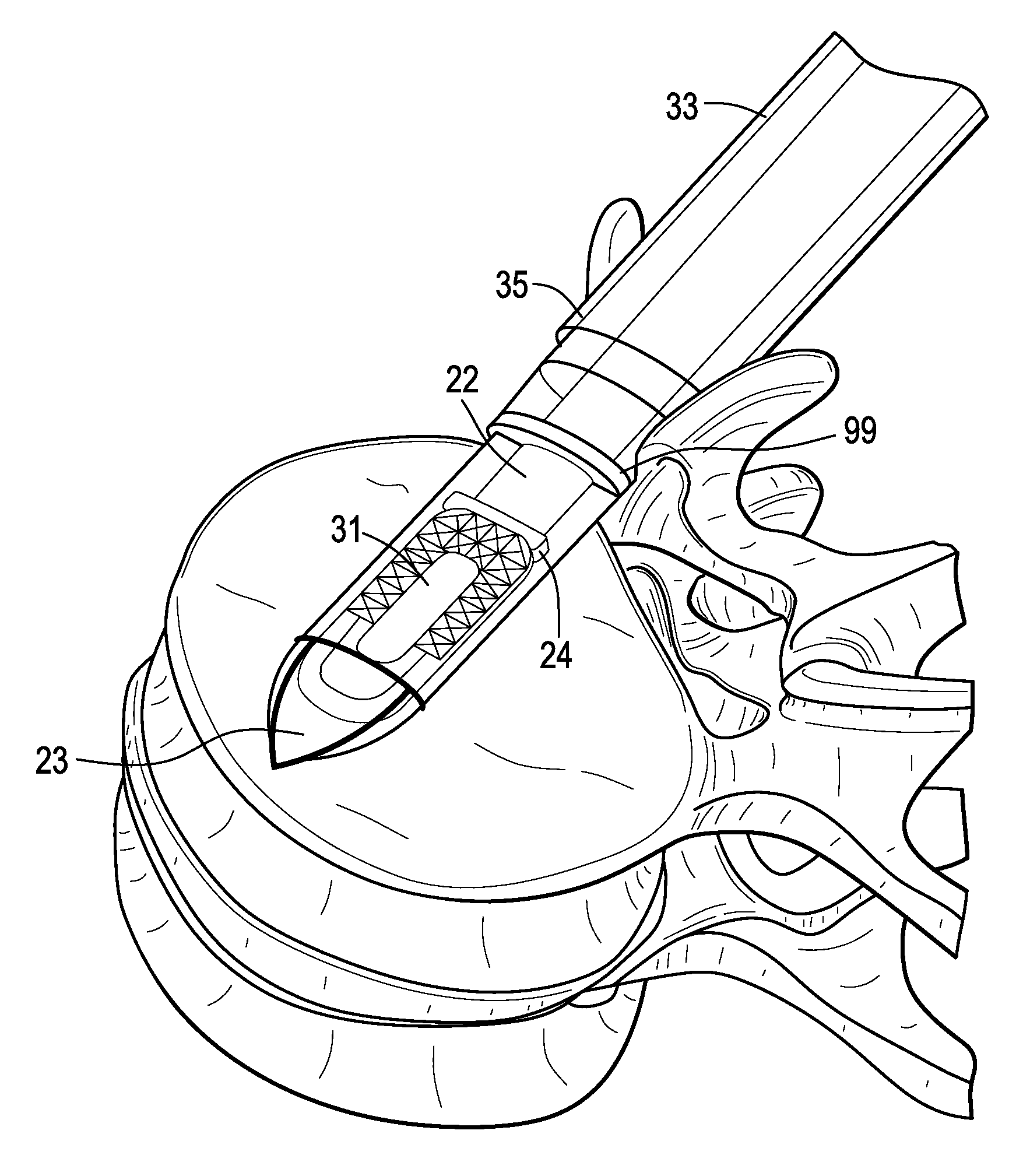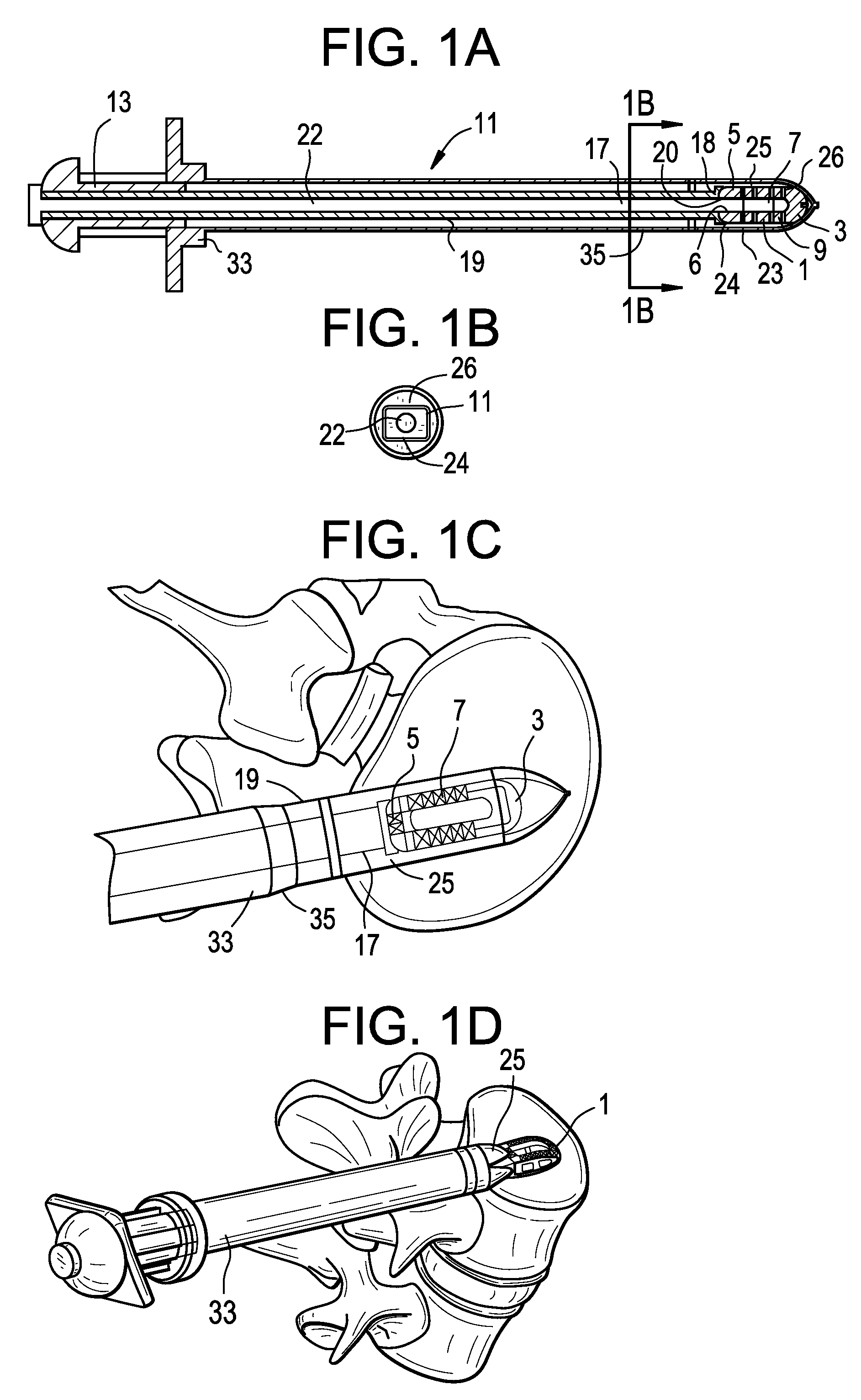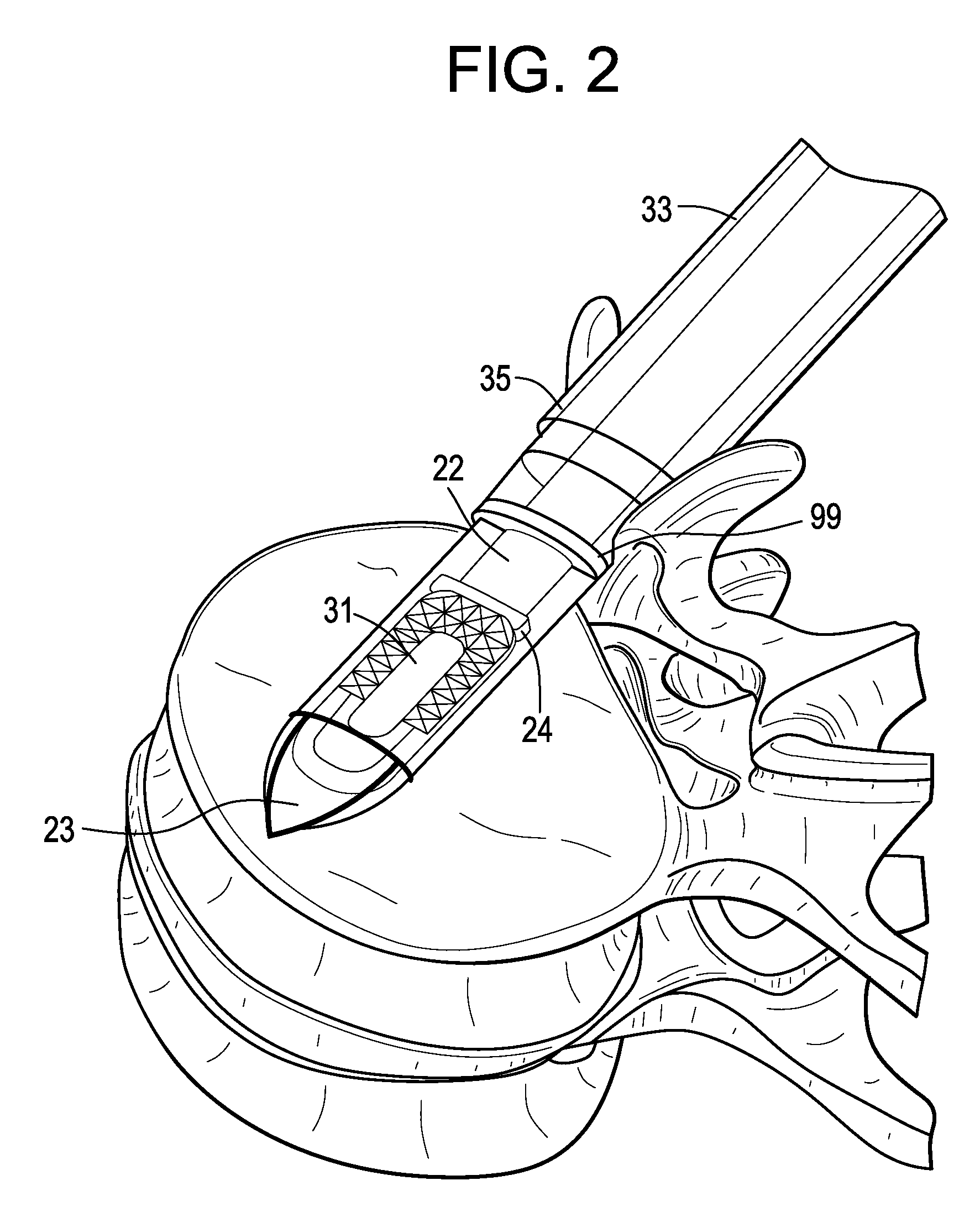Enhanced cage insertion device
a cage and cage technology, applied in the field of enhanced cage insertion devices, can solve the problems of high proinflammatory cytokines, high risk of patient operative time, and inability to effectively so as to facilitate insertion and placement of instruments, increase patient risk and operative time, and prevent patient stress-inducing engagement
- Summary
- Abstract
- Description
- Claims
- Application Information
AI Technical Summary
Benefits of technology
Problems solved by technology
Method used
Image
Examples
Embodiment Construction
[0052]In some embodiments, the instrument comprises two, three, four or more components.
[0053]Now referring to FIGS. 1A-1D, there is provided an assembly of the present invention in which the inserter has four components: a sheath, a cannulated rod holder, a rod and a docking port. In particular, the assembly comprises:[0054]a) an intervertebral fusion cage 1 having a leading end 3, a trailing end 5 having a threaded hole 6, an upper face 7 and a lower face 9, and[0055]b) an inserter 11 comprising:[0056]i) a cannulated rod holder 13 having a bore therethrough and a distal end portion 17 having a distal end 18 bearing against the trailing end of the cage,[0057]ii) a rod 22 received within the bore of the cannulated rod holder, the rod having a threaded distal end 20 mating with the threaded hole of the cage,[0058]iii) a cannulated sheath 19 adapted to receive the cannulated rod holder, the sheath having a plurality of sheath portions 23,25 extending distally therefrom,[0059]iv) a doc...
PUM
 Login to View More
Login to View More Abstract
Description
Claims
Application Information
 Login to View More
Login to View More - R&D
- Intellectual Property
- Life Sciences
- Materials
- Tech Scout
- Unparalleled Data Quality
- Higher Quality Content
- 60% Fewer Hallucinations
Browse by: Latest US Patents, China's latest patents, Technical Efficacy Thesaurus, Application Domain, Technology Topic, Popular Technical Reports.
© 2025 PatSnap. All rights reserved.Legal|Privacy policy|Modern Slavery Act Transparency Statement|Sitemap|About US| Contact US: help@patsnap.com



